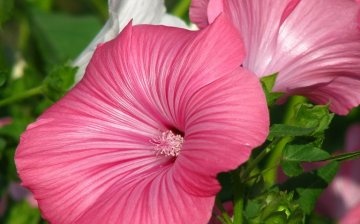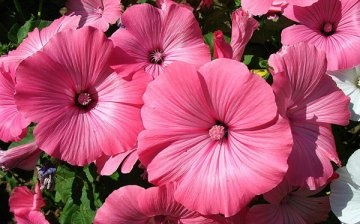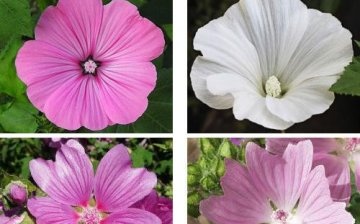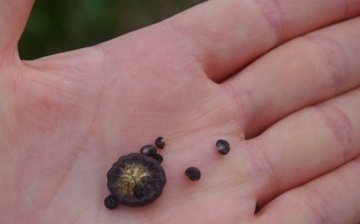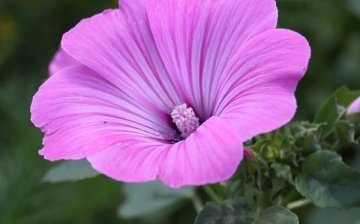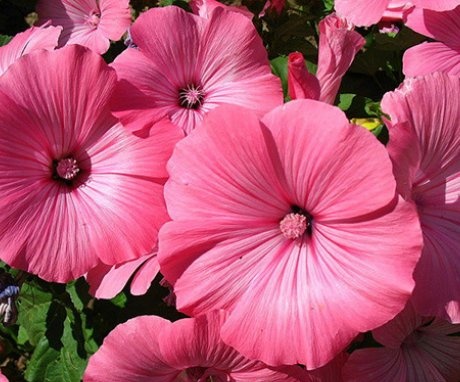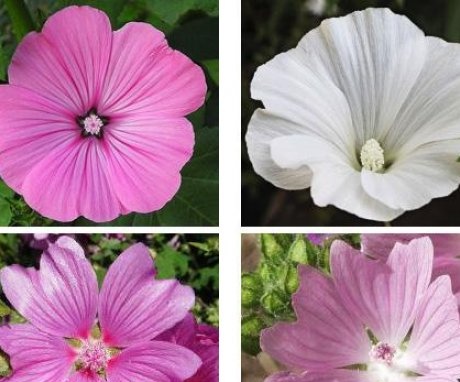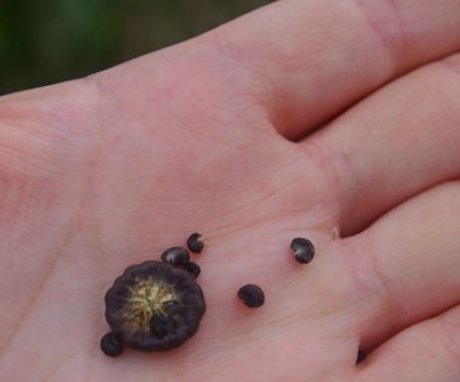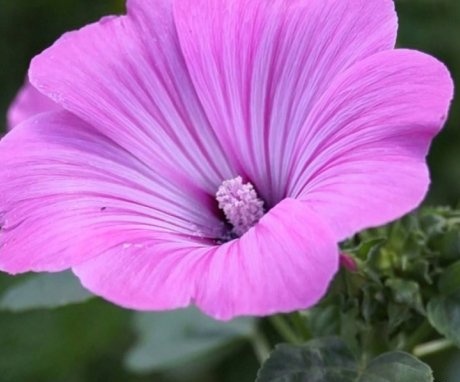Lavatera: planting and caring for a garden flower
Any gardener wants to decorate his garden, while not particularly straining. There are many beautifully flowering vigorous plants that do not require much care. The lavater plant also belongs to a similar species. Flowers are available both in a one-year blooming culture and in a multi-year blooming culture. Stores are pleased to present a huge number of species that differ in the color of the buds and the height of the stem.
This plant is decorative, therefore it is suitable both for one-color landscaping and for planting in groups surrounded by different flowers and green cultures. Balconies and loggias will be a great place to use a flower. If properly cared for, it can grow at home.
Content:
- Description of Lavater
- What are the best varieties to grow from seeds?
- When and how to sow lavater
- Lavater care
Description of Lavater
Mallow flowering plants are the species to which the lavatera belongs. It is named after brothers Lavater, Kal Linnaeus took the initiative to name the flower that way. The brothers were famous doctors and scientists from Switzerland in the 16th century. In the vastness of nature, the plant can be found in Australia, North America, Asia, and a little in Europe. Previously, the view was very unsightly, breeders did a great job, but they bred 25 of the most beautiful subspecies.
Representatives of the family are mainly tall species, the stems of which reach one hundred and thirty centimeters. Lavater has a well-developed root system, flowers are large, there are white, red, pinkish and purple flowers, and the foliage is thick. Lovers of small bushes also have something to buy.
The most popular are two plant varieties: the three-month-old lavatera (only blooms for one summer) and the perennial Thuringian lavatera.
Impressive growth and straight stems adorned with spikelet-shaped inflorescences are the hallmarks of the Thuringian Lavater. Sometimes it reaches two meters in height.
What are the best varieties to grow from seeds?
If you choose the right type of plant, then you can greatly facilitate the care of your garden. The following are the most popular and attractive varieties of Lavatera to grow by seed from seedlings or by planting in the ground.
Popular varieties of Lavatera:
- Lavatera "Krasotka" is a beautiful and cold-resistant species, its difference is that it grows quickly and blooms beautifully, the color of the buds is different. The seedling method is much better.
- Barnsley Lavater can be grown this way and is a delightful mix of colors and buds. The variety differs in that on one bush there are buds of different shapes, this gives the impression of a rose bush. The sharp contrast of flowers with foliage, as well as a rich red color, gave the name to another variety of Lavatera - Ruby Lavatera. This plant is very elegant, therefore it can decorate a wide variety of landscapes. For those who love a romantic and airy mood, it is better to take a pink or white lavender. The rich color of the leaves perfectly sets off the pastel delicate flowers.
- Lavatera "Tanagra" is a stunted plant, which is why it should not be planted near the curbs. Half a meter is the highest height the stem is capable of growing.The diameter of the bud is five centimeters. The color of the buds is usually red. The same plant with only white flowers is called "Mont Blanc". The "Silver Cup" variety has a salmon shade.
When and how to sow lavater
Seedling cultivation prevails both in large agricultural holdings and among summer residents. Only those who know exactly how to sow and in what period to sow lavender will have an excellent result. The planned flowering period and climatic conditions of the area mainly determine the time of planting indoors.
If you want to make out a flower bed in May, it is necessary to transplant Lavatera in early March. You can sow earlier if you need strong or large shoots.
Before you start sowing lavender, prepare different containers for each species. Such division will help to aesthetically design your flower beds in the future, taking into account the placement of flowers according to their color scheme.
It follows from this that the decision of when to sow lavater on seedlings at home, you can make yourself. It is not necessary to carry out the sowing procedure too early, since with a short daylight hours, the seedlings are too stretched. Additional lighting should solve this annoying problem.
Recommendations for growing Lavatera seedlings:
- Growing a plant using seedlings from seeds does not require much effort. Flowers are usually sown in fairly flat containers up to one centimeter deep.
- Five days later, you can already see the first sprouts of the Lavater.
- Thickening crops is not worth it.
- When the second pair of leaves appears, the plant needs to be dived into separate bowls, the diameter of which will be up to five centimeters.
- In order for a powerful root system to appear, this is quite enough.
- During the period while you are growing the lavatera, it needs three dressings, the interval between which should be equal to two weeks. Dive seedlings, and after ten days, feed.
- Next, you need a timely transplant into open ground. In most cases, this is done during the period when the spring frost has already passed.
- You need to choose an illuminated place, the sun's rays will fall on during the whole daylight hours.
- You need to dig holes, and then add to them complex fertilizers and humus.
- Then heavily pour water over the pits.
- Free the sprout from the glass and transplant it into the ground, bury it five centimeters above the sepals.
- After planting, water the plant abundantly for ten days.
Sowing when growing such a flower is possible in the spring. In order to do this, you need to plant the plant under the material with which you will cover it, in early May.
In the soil where the sowing will take place, make depressions and sprinkle the seeds to a depth of one centimeter.
Fill the top of the groove with loosened humus or humus mixed with the ground. Water well and cover with a film through which the sun's rays penetrate. Remove the covering material only when the flowers are five centimeters high.
At the same time, it will be good to carry out a light hilling of the stems, apply mineral fertilizers and loosen the ground. Watering is necessary when the soil dries to a depth of five centimeters. Seedlings have appeared, which means that after thirty days the plant will bloom.
Lavater care
You will not need special technical skills and abilities when growing a lavater in the country. After all, this plant is so unpretentious that it can grow even in clay soils that are poor in structure. The flower perfectly tolerates dry periods and the lack of the required temperatures. It will bloom even at ten or twelve degrees above zero.
Removing weeds and loosening the soil is the main care for the laver.
The plant is quite powerful and during the period of maturity it independently destroys all weeds, but during the initial stages of development it needs help in a difficult struggle for survival.
Combine loosening the soil, removing weeds with strong watering. Lavater does not need to water every day, but abundant watering once a week is still necessary. When the weather is dry and stuffy, you can water the flower additionally, if necessary. It is also not necessary to forget about timely and such necessary fertilizing while caring for a flower.
You can get delightful bushes with numerous buds only if you adhere to a small rule:
- At the very beginning of growth, the flower needs a fairly large amount of nitrogen and organic fertilizers. This will help the plant develop a large and strong stem and root system.
- If the lavatera plant has reached a height of half a meter, then the volume of nitrogen should be reduced, but a little more phosphorus, potassium fertilizers, as well as manganese and magnesium should be added.
- Such useful microelements can accelerate the formation of flower buds, as well as contribute to the development of a beautiful rich color of the buds.
When planting seedlings outdoors, plant the seedlings twenty centimeters apart. If planting is carried out by seeds, you need to thin out the plants in the phase when the second pair of leaves appears completely, also by twenty centimeters. Unnecessary sprouts can be planted somewhere else.
For tall plants, additional supports may be required so that the plants look gorgeous and appear before the eyes of the gardener in all their glory.
More information can be found in the video.



